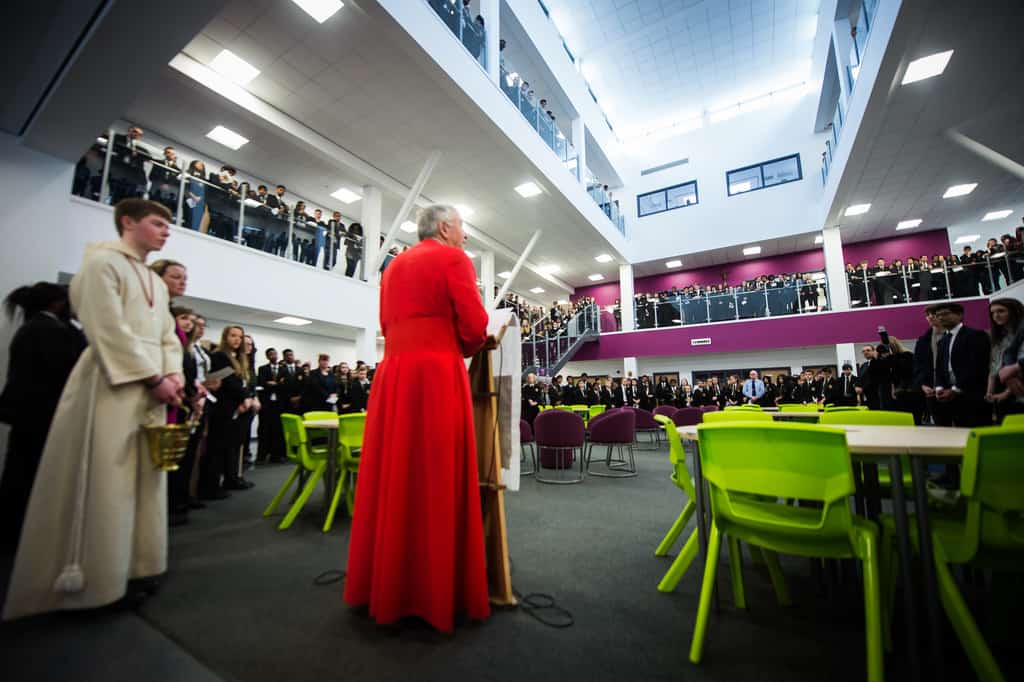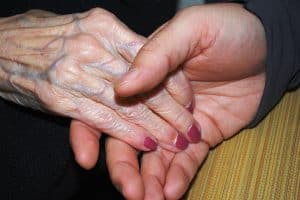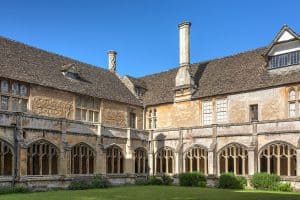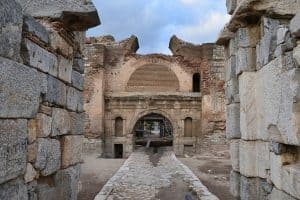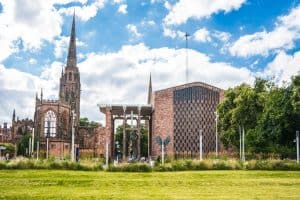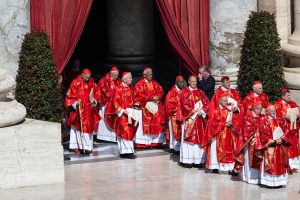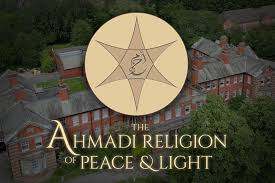By Trevor Barnes
Religiously-affiliated schools play a large part of the British state school system, with 37% of primary schools and 18% of secondaries classes as faith schools. Despite recording slightly better results than average, they inspire much contention, with both fierce opposition and support.
The history
Historically faith and education have been closely linked. The Roman Catholic Church was the first provider of schools in England. The earliest were attached to cathedrals and monastic foundations and appeared from the late sixth century. After the Reformation, the emerging Church of England began to provide its own network of schools throughout the country.
The Education Act of 1944 allowed Anglican, Catholic and the small number of Jewish schools to be absorbed into the state system. More than half of Church of England schools became “voluntary controlled” and were funded by the state via local authorities, which exercised control over such things as the curriculum, the appointment of governors and teachers, and admissions criteria.
A third of Anglican schools and most Roman Catholic schools became “voluntary aided” schools. This meant they remained part of the state system while retaining their distinctively Anglican or Catholic ethos and exercising greater control over the everyday running of the school.
As British society became more religiously diverse, a significant number of adherents of minority faiths sought to emulate the churches’ model and establish schools reflecting their own distinctive creed and ethos. The Islamia Primary School in London became the first state-funded Muslim school in 1998. The first Sikh school opened in 1999 and the first Hindu school in 2008.
Confusingly, the term “faith school” these days can encompass a broad range of educational institutions from a C of E primary serving an ethnically and religiously mixed inner-city area, to a single-sex Muslim academy where pupils are expected to wear a hijab; from a venerable, high-achieving Catholic public school to rudimentary premises on a light industrial estate promoting creationism and a narrow, ideologically unchallengeable interpretation of scripture.
The situation today
In 2007 a third of all state schools in England were run by religious groups, mostly the Church of England or the Roman Catholic Church. There were 37 Jewish schools, seven Muslim, two Sikh, one Seventh Day Adventist and one Greek Orthodox school. The figures come from Education in England: A History by Derek Gillard, 2018.
By 2017 the numbers had risen, according to the Department for Education figures collected in that year’s school census. In England, faith schools educated 1.9m pupils in state-funded, mainstream primary and secondary schools. This amounted to about a quarter of the total in all state schools.
In Wales, 30,549 pupils attend the principality’s 91 Catholic schools according to the Catholic Education Service. The Church in Wales has 152 primary and secondary schools across the principality.
In Scotland, there are 378 denominational schools, of which 367 are local authority schools (fully funded by government) and the remaining 11 are independent (funded by private means) according to a freedom of information request to the Scottish Government.
Northern Ireland, has a complex school structure. Government figures show that 93% of children in primary and secondary schools attend either Catholic schools or “controlled” schools.
There are 560 “controlled” schools teaching pupils of all religions and none – though pupils of a Protestant denomination account for 66% of the total school roll (140,600) according to the Controlled Schools’ Support Council of Northern Ireland.
There are 547 Catholic schools teaching about 45% of all pupils according to the Northern Ireland Commission for Catholic Education.
There are also 62 “integrated” schools committed to teaching equal numbers of Protestant and Catholic pupils alongside children of other faiths and none.
Primary schools
In 2017 the number of state funded mainstream primary faith schools in England was 6,177 representing 36.8% of total primaries.
No religious character – 10,609 schools, 63.2% of the total
Church of England – 4,377 schools, 26.1% of the total
Roman Catholic – 1,645 schools, 9.8% of the total
Methodist – 25 schools, 0.1% of the total
Other Christian – 72 schools, 0.4% of the total
Jewish – 36 schools, 0.2% of the total
Muslim – 13 schools, 0.1% of the total
Sikh – five schools, less than 0.1% of the total
The number of secondary faith schools was 627 amounting to 18.4% of the total.
No religious character – 2,771 schools, 81.3% of the total
Church of England – 209 schools, 6.1% of the total
Roman Catholic – 322 schools, 9.4% of the total
Other Christian – 73 schools, 2.1% of the total
Jewish – 12 schools, 0.4% of the total
Muslim – four schools, 0.1% of the total
Sikh – six schools, 0.2% of the total
Hindu – one school, less than 0.1% of the total
What about including private faith schools?
If you include fee-paying private schools run on a faith basis alongside the state schools above, there are many more faith schools in total.
In 2018, there were seven Hindu schools, according to the Avanti Schools Trust, which runs them. They educate 3,000 students across five primary schools, one secondary school and one “all through” school. All are state-funded academies.
The Sikh Press Association said there were 14 Sikh schools in England solely.
There are also reportedly 120 Jewish schools across England and Scotland (with none currently in Wales or Northern Ireland). About 37,000 Jewish children attend these schools, according to the Partnership for Jewish Schools. They range from ultra-orthodox single-sex schools to the more secular mixed schools, primaries and secondaries in both the state and private sector.
Although predominantly in London, there are Jewish schools in Glasgow, Birmingham, Liverpool, Leeds and Manchester. Many of the pupils attending the Jewish schools in Glasgow, Birmingham, Liverpool and Leeds are not Jewish.
According to the Association of Muslim Schools, in 2018 there were a total of 184 Muslim Schools: one academy, 16 free schools, 12 voluntary aided, and 155 independent schools. There are no state-funded Muslim schools in Northern Ireland or Scotland. Wales has been included in the English central region.
Performance
Examination results for state-funded faith schools in England are somewhat better, on average, than for non-faith schools. In 2017 the average “Attainment 8” score for mainstream state-funded faith schools was 49.0 compared with 46.9 at non-faith schools, according to Faith Schools in England, a House of Commons Library briefing paper in June, 2018
However the report noted that, as pupil intake differs between faith and non-faith schools in both background characteristics (eg free school meal eligibility) and prior attainment, these headline results could be misleading.
Independent faith schools
Although the Ofsted inspection of 2017 judged a number of faith schools “outstanding” or “good”, its report noted: “There has been a sharp decline in inspection outcomes for other independent schools and in particular schools with a faith. Almost half of faith schools (49%) were judged less than good at their most recent inspection and over a quarter (26%) were inadequate.”
A third (33%) of the Christian schools, 54% of the Jewish schools, and 58% of the Muslim schools “required improvement” or were judged “inadequate”.
Unregistered/illegal faith schools
These continue to give concern to school inspectors. Independent schools are required by law to register with the Department for Education but many use loopholes surrounding home schooling to evade prosecution.
In 2016, Sir Michael Wilshaw, who was then the chief inspector of schools, recognised “more than 100 unregistered schools” (mainly in London, Birmingham, Luton, Wolverhampton and Staffordshire) but added that the figure was “likely to represent only a small proportion of the illegal schools operating across the country”. Not all unregistered schools have a religious impetus. Some estimates put the figure in 2018 at more than 280, of which illegal faith schools account for an estimated 20%.
Often working from unsatisfactory premises and staffed by unqualified teachers with scant regard to safeguarding procedures, the worst of these schools have been found to be promoting a highly conservative reading of the Jewish, Christian or Muslim faith and failing to promote values in keeping with those of mainstream British society.
Faith schools and the law
Faith schools have to teach the national curriculum but they can choose what they teach in religious studies.
Faith schools may have different admissions criteria and staffing policies from those in non-faith schools although anyone of any faith or none can apply. All academies, including faith academies, have their own admissions processes and do not have to teach the national curriculum.
New faith academies and free schools must ensure that, if oversubscribed, they offer a minimum of 50% of their places irrespective of faith affiliation. The Catholic Education Service (CES) strongly opposes this and, in 2018, had hoped that the Education Secretary, Damian Hinds, a Catholic, would remove the 50% cap. The CES, disappointed that he did not, argues that this inhibits the Roman Catholic Church from opening new schools as canon law prevents them from turning away a Catholic child.
If places are available, faith schools are required to offer them to every child who applies “whether of the faith, another faith or no faith”.
Faith schools are permitted to take into account religious considerations in employment matters such as the appointment (and dismissal) of teachers and heads.
Ofsted inspectors must not comment on the content of religious worship or on denominational religious education but they may comment on the contribution they are making to a child’s wider moral, social and cultural development.
Faith schools may not teach creationism as an evidence-based scientific theory. In RE lessons it may be presented as part of a particular belief system, if this does not undermine established scientific theory. It should not be presented as having a similar evidence base as or superior evidence base to scientific theories.
Faith schools are free to express their belief that marriage is a union between a man and a woman, but teaching should be based on facts and should enable pupils to develop an understanding of how the law applies to different relationships. Teachers must follow statutory guidance on sex and relationship education, and must satisfy the demands of equality and human rights law.
What are the arguments for and against faith schools?
Faith schools excite opposing opinions. Supporters argue that state-funded faith schools are among the best-performing schools in the country, inculcating a sense of respect, discipline and care for others. Detractors say they are divisive and often sectarian propounding a misguided world view at odds with the UK’s inclusive society made up of people many different faiths and none.
Criticism has come not only from the National Secular Society and Humanists UK but also from some religious representatives who themselves have argued that faith schools run the danger of fostering a sense of religious segregation, hindering rather than promoting community cohesion.
Secularists fear that faith schools may be practising a covert form of religious indoctrination, potentially isolating pupils from mainstream British society and promoting an understanding of issues – such as abortion, homosexuality, the family, evolution, and women’s rights – at odds with mainstream British values. To do this, they argue, is dangerous and unhealthy and to do it with secular taxpayers’ money is unfair.
Supporters of faith schools defend a school’s right to teach within an environment that embodies and reflects a particular religious ethos. They deny charges of sectarianism and point out that it is often the academic achievements of such schools rather than their faith base that make them popular with parents in the first place.
They argue further that the requirement for them to adhere to the national curriculum and to present a comprehensive compendium of views surrounding contentious moral and social issues militates against either extremism or indoctrination.

